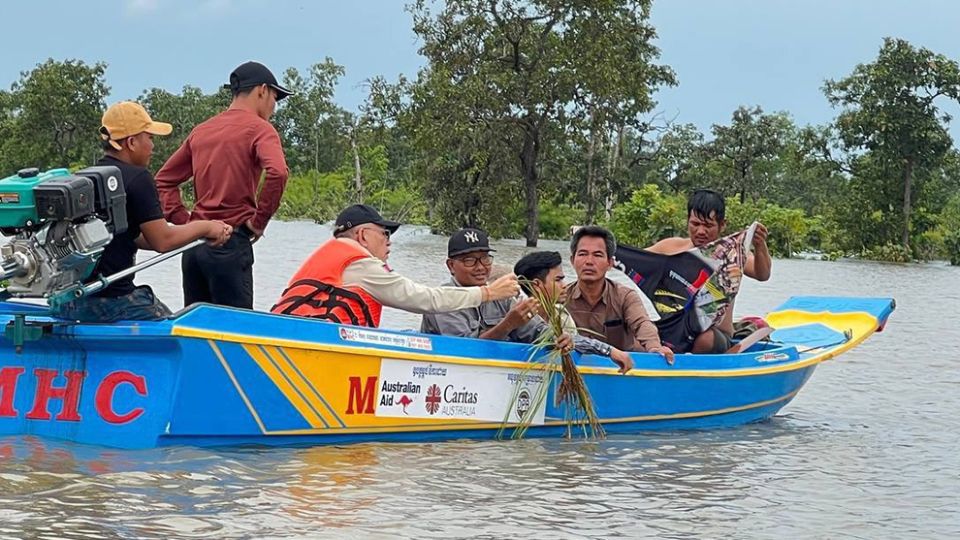September 30, 2025
PHNOM PENH – As of Sunday, September 28, flooding caused by continuous rainfall had affected more than 20,000 families and over 10,000 hectares of rice fields across nine provinces.
Soth Kimkolmony, spokesperson for the National Committee for Disaster Management (NCDM) announced today that the flooding has impacted 21,357 families, or 17,348 households in 40 towns and districts.
Among them, 1,037 families have been evacuated to safety.
He noted that the nine provinces are Ratanakkiri, Stung Treng, Kratie, Prey Veng, Kampong Thom, Siem Reap, Mondulkiri, Banteay Meanchey and Tbong Khmum.
The floodwaters inundated 12,791 hectares of rice fields and 32,476 metres of roads. Although damage assessments have not yet been conducted, Kimkolmony noted that 281,534 metres of rural dirt roads are submerged, while 90 schools and 15 hospitals or health centres have also been affected.
“Disaster management committees at the capital and provincial levels are reviewing the available resources, equipment and measures prepared as part of flood disaster contingency plans. They are also regularly inspecting flood levels and the living conditions of affected residents,” he said.
The Ministry of Water Resources and Meteorology announced on Monday that Tropical Storm Bualoi (Bualoi T2520) continues to strongly influence the southwest monsoon system affecting the Andaman Sea, Gulf of Thailand, Mekong Basin and the South China Sea. The storm is not expected to make landfall in Cambodia, but high winds, heavy rains and thunderstorms are likely to affect more than half of the Kingdom in the next few days.
Water resources minister Thor Chetha conducted on-site inspections of flooding in Kampong Thom and Siem Reap provinces over the weekend, while a working group cleared water flow at the O Touch Loek dam in Kampong Thom’s Kampong Svay district to facilitate faster drainage into the Tonle Sap Lake and reduce water pressure on the Stung Sen River.
The minister also ordered the construction of a 25-meter bailey bridge for temporary travel by residents, as the washed-out site at the dam served as a roadway embankment.
Additionally, he instructed ministry officials and provincial water resource departments to continue collaborating with local authorities and relevant institutions to thoroughly assess damage, draft intervention plans and provide assistance to flood-affected residents.
He further stressed the need for ongoing preparedness at flood-prone locations to divert water and prevent further inundation of infrastructure, pagodas, schools and homes.


